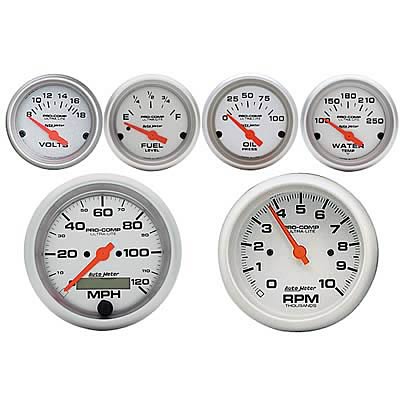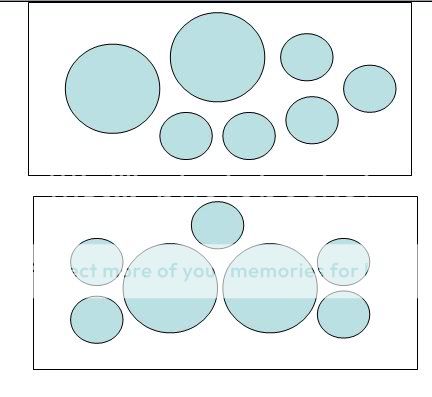stumpXJ
NAXJA Forum User
- Location
- Atlanta, Georgia
So here is the hypothetical:
I am installing all new autometer gauges in my 96 (old style) XJ. I am getting rid of the original gauge cluster, and making my own instrument panel (probably out of some matt finished carbon fiber, or anodized aluminum) with these new gauges installed where the normal OEM gauge cluster was.
Why? Because I can, and because I want to. I dont like anything about the stock XJ dash/instrument panel area, and want to be a little different. I have the knowledge, skill and equipment to make it happen with good results, that is not the issue. The issue (granted its not earth shattering) is what arrangement to install the gauges? Big ones (speedo and tach) on the top with the smaller ones on the bottom? small ones on the sides? some combination of these?
I have this gauge kit, as well as a matching trans temp guage of the small size. So, 2 big gauges, and 5 smaller gauges.

If you were doing something similar, or have seen something similar, please share your thoughts.
I have searched a bit for this type of modification, but havent seen any pics or even write ups on it. I know some buggy/truggy creations have their own versions of dash's, but not on a relatively stock interior XJ
Thanks, James
I am installing all new autometer gauges in my 96 (old style) XJ. I am getting rid of the original gauge cluster, and making my own instrument panel (probably out of some matt finished carbon fiber, or anodized aluminum) with these new gauges installed where the normal OEM gauge cluster was.
Why? Because I can, and because I want to. I dont like anything about the stock XJ dash/instrument panel area, and want to be a little different. I have the knowledge, skill and equipment to make it happen with good results, that is not the issue. The issue (granted its not earth shattering) is what arrangement to install the gauges? Big ones (speedo and tach) on the top with the smaller ones on the bottom? small ones on the sides? some combination of these?
I have this gauge kit, as well as a matching trans temp guage of the small size. So, 2 big gauges, and 5 smaller gauges.

If you were doing something similar, or have seen something similar, please share your thoughts.
I have searched a bit for this type of modification, but havent seen any pics or even write ups on it. I know some buggy/truggy creations have their own versions of dash's, but not on a relatively stock interior XJ
Thanks, James


